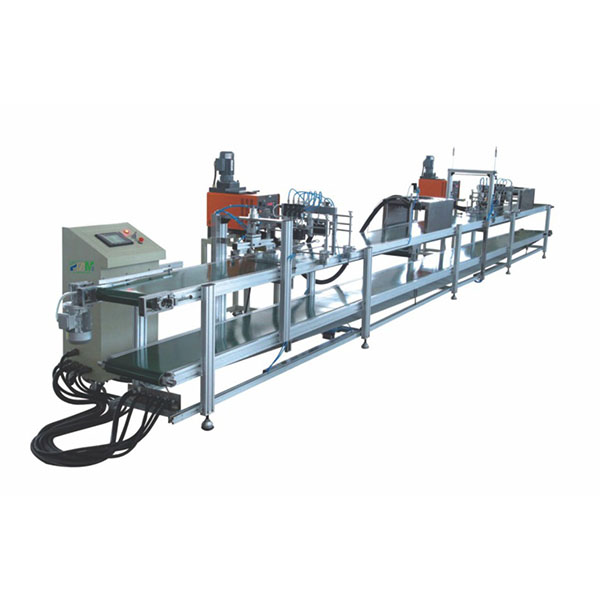Hyd . 21, 2024 16:14 Back to list
China Eco-Friendly Air Filtration Solutions for a Healthier Environment
A Comprehensive Look at China Eco Air Filters
In recent years, air quality has emerged as a pressing global issue, particularly in urban areas where pollution levels are dangerously high. To combat these challenges, various technologies have been developed, among which air filters play a crucial role. In China, the demand for eco-friendly air filters has surged as both the government and consumers become more conscious of environmental sustainability. This article explores the significance, types, and advancements in China’s eco air filter industry.
The Importance of Eco Air Filters
With rapid urbanization and industrial growth, cities in China often face severe air pollution. High levels of particulate matter (PM2.5) and other harmful pollutants have not only affected public health but also contributed to climate change. This stark reality has prompted a shift towards eco-friendly solutions, including the development and adoption of eco air filters.
Eco air filters are designed to reduce pollutants in indoor environments, thereby improving air quality without compromising environmental integrity. Unlike conventional filters that may contain harmful materials, eco air filters are made from sustainable, non-toxic components, ensuring minimal impact on the environment at every stage—from production to disposal.
Types of Eco Air Filters
1. HEPA Filters High-Efficiency Particulate Air (HEPA) filters are renowned for their ability to trap 99.97% of particles that are 0.3 microns in size. These filters are effective against dust, pollen, and pet dander. In the Chinese market, manufacturers are increasingly focusing on creating HEPA filters using eco-friendly materials such as biodegradable plastics that break down over time without leaving harmful residues.
2. Activated Carbon Filters Activated carbon filters are effective in removing volatile organic compounds (VOCs), odors, and other harmful gases. Many Chinese companies are innovating by using sustainable sources of activated carbon, such as coconut shells, which can be regenerated and reused, reducing waste.
3. Photocatalytic Filters These advanced filters utilize light energy to promote chemical reactions that break down harmful pollutants. They are highly effective against bacteria and viruses, which is particularly relevant in light of global health crises. Eco-friendly variants of these filters use non-toxic catalysts that further enhance their appeal.
china eco air filter

4. Electrostatic Filters These filters use electrically charged fibers to attract and capture particles. The design and manufacturing processes are being refined in China, enabling the creation of filters that not only conserve energy but are also entirely recyclable.
Technological Innovations
China is at the forefront of air filter technology, pushing the boundaries of what eco air filters can achieve. Researchers and engineers are developing smart air filters equipped with IoT capabilities that monitor air quality in real-time and can connect to smartphones for user convenience. These innovations not only help consumers take control of their indoor air quality but also promote environmentally-friendly practices.
Furthermore, advancements in nanotechnology have led to the creation of ultra-fine filter materials that enhance filtration efficiency while minimizing pressure drop, which is essential for energy efficiency. Some of these materials are also designed to be more durable, extending the lifespan of the filters and reducing the frequency of replacements.
Government Regulations and Support
The Chinese government has recognized the importance of air quality and sustainability, leading to stringent regulations aimed at improving air quality in urban areas. Initiatives promoting the use of eco-friendly materials and technologies are being prioritized. Financial incentives and subsidies for companies that invest in green technology have also been implemented to bolster the development of eco air filters.
Conclusion
As China grapples with the challenges of air pollution, eco air filters represent a vital component of the solution. By embracing sustainable practices and supporting technological advancements, the country can improve indoor air quality while minimizing its environmental footprint. The future of air filtration in China looks promising, with eco-friendly innovations paving the way for a healthier and more sustainable environment for all. As consumers become increasingly eco-conscious, the demand for these filters will continue to grow, sparking even more innovation in this crucial industry.
-
Active Carbon Air Filter for Air Purifier – Superior Odor & Allergen Removal
NewsJul.24,2025
-
High-Efficiency Active Carbon Air Filter for Air Purifier | Odor & Allergen Removal
NewsJul.23,2025
-
Active Carbon Air Filter for Air Purifier – High Efficiency Filtration Solution
NewsJul.22,2025
-
Durable Sintered Porous Metal Filter Tube Cup & Machines
NewsJul.22,2025
-
Effective Active Carbon Air Filter for Purifiers | Eliminate Odors
NewsJul.21,2025
-
PLJT-250-25 Full-auto Turntable Clipping Machine | Efficient Automation
NewsJul.20,2025
